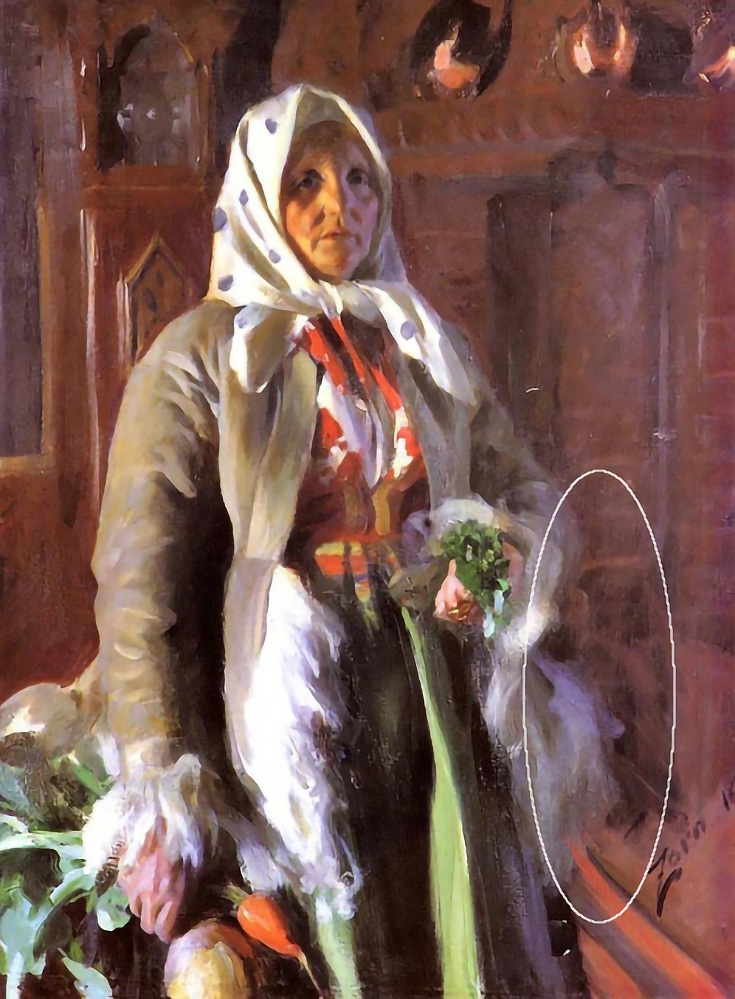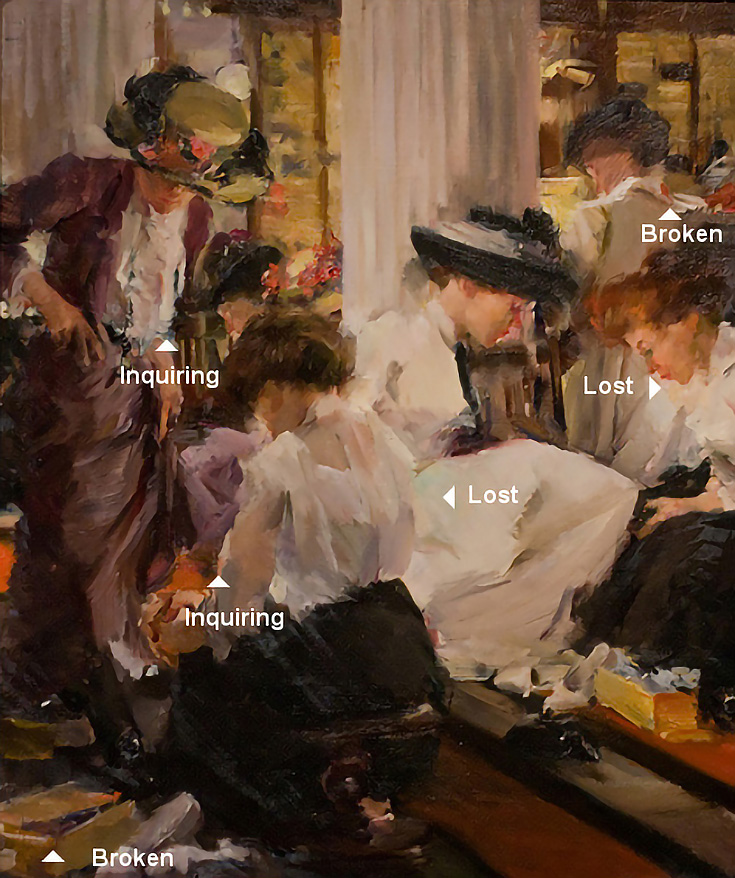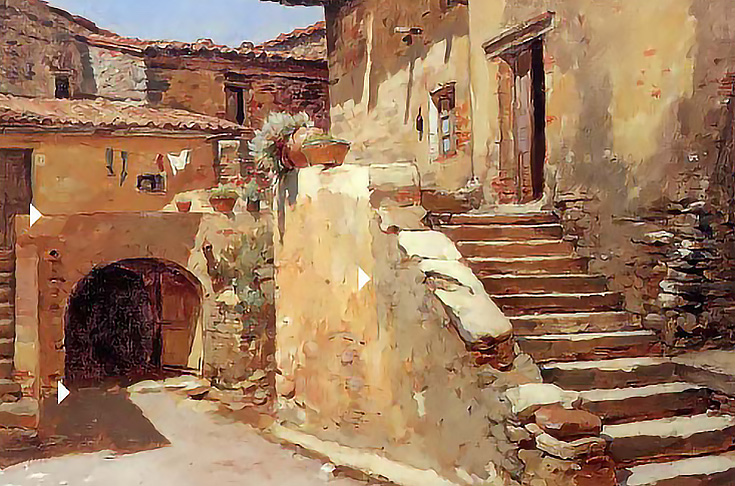It’s always exciting to encounter a painting where every shape and image play an important role within the total composition. One simple method for making this happen is by observing and manipulating edges to achieve a specific result.
How do edges affect a composition?
Edges are the boundaries that form shapes. They can be distinct or indistinct, and therein lies how useful they can be in helping us create a unified composition.
A distinct edge is one that is obvious, one that we see quickly—in other words, a sharp or hard edge. Because of our eyes’ inability to focus on more than one thing at a time, distinct edges must be used judiciously else the work will feel disjointed.
Used wisely, distinct edges can be a good tool for anchoring a center of interest or for giving a bit of emphasis in a certain spot.
It’s the indistinct edges, however, that allow shapes to play an active role without making themselves too obvious—letting viewers read the entire painting as a single, unified whole.
Four types of indistinct edges in painting:
Artists throughout the centuries have discovered and perfected various methods for making indistinct edges. Four of these strategies are blending, lost and broken edges, inquiring edges and close-value edges.
Let’s define these four edges by examining how three artists have used them in their work. Take a look at Mona, a painting by 19/20th c. Swedish painter Anders Zorn.
I circled one area where Zorn effectively uses blending to create an indistinct edge. Take a good look there at how he softly merges fabric with background.
Now examine the subtly blended edges around Mona’s scarf and the more actively blended background furniture and you’ll see that Zorn has done minimum blending in some areas and a bit more in others.
Each degree of blending plays a role in how the painting reads. Imagine, for example, how stiff and isolated Mona would be if all the shapes’ boundaries had been rendered distinctly and how distracting and noisy the furniture would be if precisely defined.
Now on to lost and broken edges. Lost edges happen when a positive shape’s value merges with the same value of a negative shape, fusing them into one shape.
Broken edges are the same but more abrupt, acting more like a path through which values pass from one shape to another.
In her painting Shoe Shop, American painter, Elizabeth Sparhawk-Jones handles both lost and broken edges masterfully.
(I’ve labeled a sampling of areas in the painting to get you started spotting them.) Notice how lights move into lights and darks merge into darks, joining positive and negative into one shape.
But look further, there’s more. Jones has made brilliant use of inquiring edges throughout the painting. An inquiring edge is one that acknowledges and emphasizes the smallest variations along the perimeter of the shape.
Examining the painting, look at those luscious edges around the sleeves and folds in fabrics. The more we look the more loaded with inquiring edges this painting becomes.
And finally, a close-value edge occurs when two adjacent shapes hold similar values like we see in Italian Courtyard by 19/20th c. American painter Frank Duveneck.
I have placed arrows at three junctures where a slight value change occurs, but as you continue looking at the painting, you will see this strategy repeated throughout.
Imagine how disjointed this picture would be if those edges had strong contrast!
Edges like these that unify and clarify a composition are a joy to create, and may suprise you with the strength they give your paintings. I’d encourage you to see how many different types of edges you can capture in your next painting.
This post may contain affiliate links.



